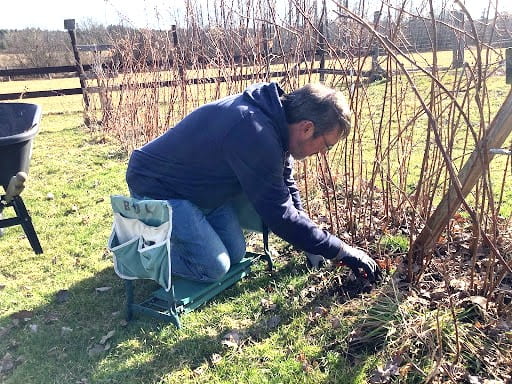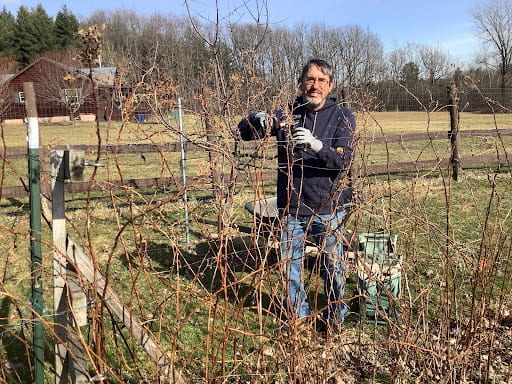You’re probably aware of the importance of pruning fruit trees in the late winter/early spring, but did you know how important it is to prune your raspberry patch?
It’s best to start with a some clear priorities when pruning:
- Remove dead, dying and diseased canes, as well as any insect pests that may be overwintering.
- Reduce competition between your plants for sun, nutrients and water, resulting in a more vigorous plant and a more fruitful harvest.
- Allow for better airflow throughout the raspberry row, drying the plant leaves and any fruit, thereby reducing fungus and mold growth.
Gardeners in northern NY generally plant two main types of raspberries. Summer-bearing raspberries fruit in July and early August, and fall-bearing raspberries fruit in September and October. Knowing whether you have summer or fall varieties of raspberry plants will dictate how they are pruned.
Summer-bearing raspberries produce fruit on canes that grew the previous summer, called floricanes. Floricanes will die immediately after fruiting, so once canes die back (i.e. appear dried and brown) they should be removed, leaving only new cane growth. These new canes will produce fruit next summer. If you missed this pruning step last year, pruning out dead canes should be your first priority. Other steps to take during winter pruning will be to thin canes to 6 to 8 inches apart, removing the smallest and weakest canes first, and to also remove any canes spreading out to where you don’t want them to grow. Make sure that you don’t miss pruning out any diseased and winter-killed canes, or crown galls that you find. Remaining canes should be topped at 48 to 60 inches in height.
Some varieties of summer-bearing raspberries (like Prelude which I have in my garden) may produce a second smaller crop on that year’s new canes in the fall. Make sure to prune off the dried flower stalks when doing your late winter pruning.
Fall-bearing raspberries are much easier to manage than summer-bearers. Fall raspberries produce a large fall crop on this year’s new canes (called Primocanes). Common fall-bearers are Autumn Bliss and Heritage. Fall-bearers are generally cut down entirely within 1 to 2 inches of the ground during the dormant season. This method of pruning allows for one large crop in the fall.
Purple and black raspberries can also be grown in northern NY. Management of these varieties is more complicated than red raspberries and involves summer pruning. If you would like to try growing purple or black raspberries, or if you have any berry-related questions, please email me at the Growline: SLCgrowline@gmail.com. You can also find basic berry cultivation information on our Gardens and Grounds resource page here.
Adding annual pruning to your to do list will result in higher yields of berries, less pest/disease pressure and easier harvesting in the patch. Happy Pruning !
 Ken Kogut has been a Master Gardener Volunteer since 2014. A retired NY DEC Natural Resource Supervisor and Wildlife Biologist, Ken now spends his time maintaining his garden, berry patches, and small orchard with a goal of living sustainably off his property. He particularly enjoys helping county residents solve their gardening issues, writing short articles for gardeners, and teaching new gardeners in Seed to Supper classes.
Ken Kogut has been a Master Gardener Volunteer since 2014. A retired NY DEC Natural Resource Supervisor and Wildlife Biologist, Ken now spends his time maintaining his garden, berry patches, and small orchard with a goal of living sustainably off his property. He particularly enjoys helping county residents solve their gardening issues, writing short articles for gardeners, and teaching new gardeners in Seed to Supper classes.
